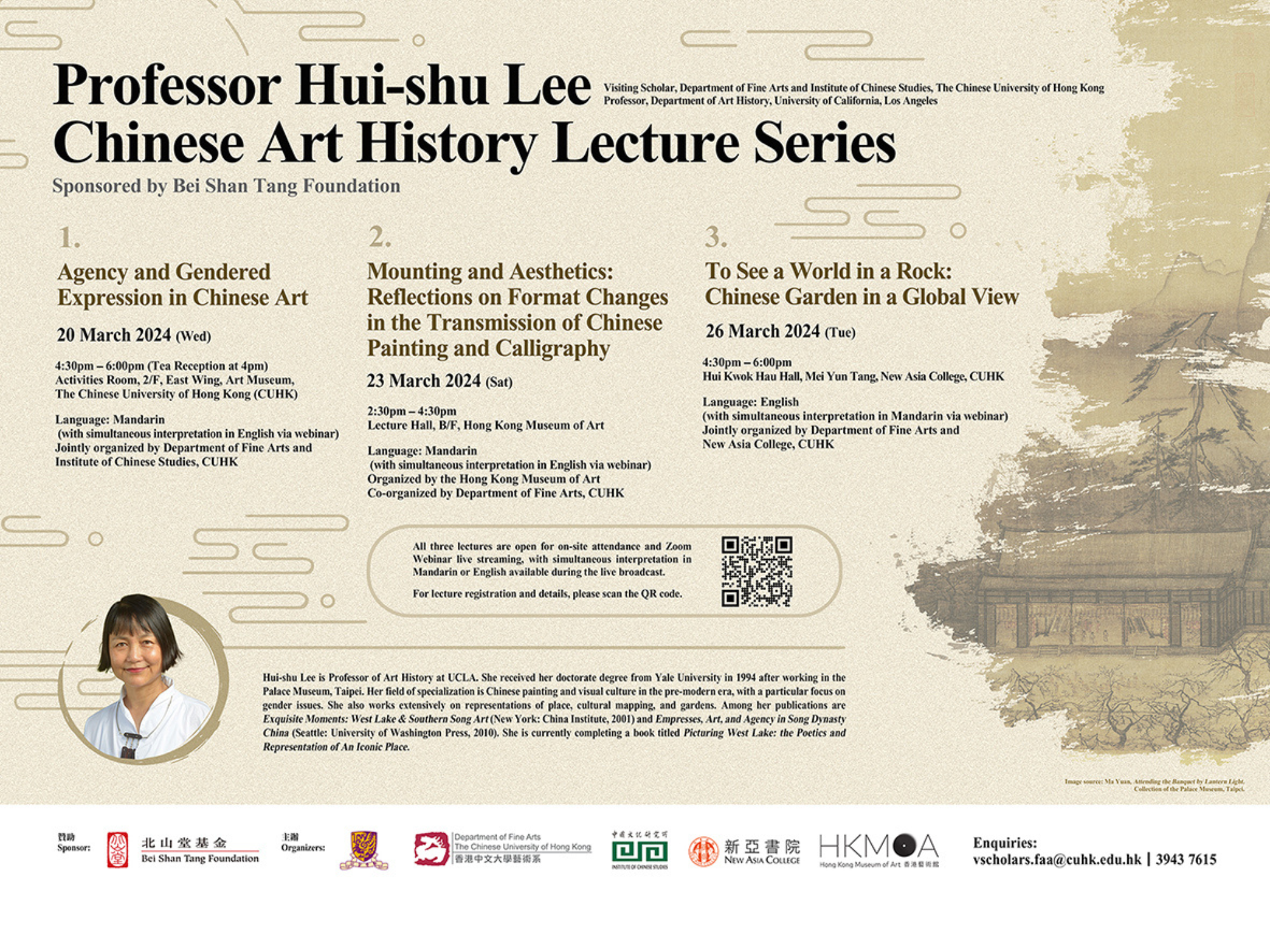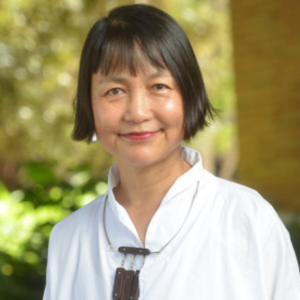
to top
20, 23 & 26 March 2024
The lecture series is part of the Visiting Scholars Scheme organised by the Department of Fine Arts and Institute of Chinese Studies, CUHK, supported by Bei Shan Tang Foundation.
All three lectures are open for on-site attendance and Zoom Webinar live streaming, with simultaneous interpretation in Mandarin or English available during the live broadcast.
Jointly organised by the Department of Fine Arts and Institute of Chinese Studies, CUHK
Date: March 20, 2024 (Wednesday)
Time: 4:30pm-6pm (4pm Tea Reception)
Venue: Activities Room, 2/F, East Wing, Art Museum, The Chinese University of Hong Kong
Language: Mandarin (with simultaneous interpretation in English via Webinar)
Agency is the capacity of an agent (person or entity) to act. Agency concerns everything humans do that has an effect on the world. This seminar explores the outlook and capacity of how the notion of agency can be applied to the study of Chinese art. Is agency discernible in a painting? And how might gendered dimensions be shown?
Organised by the Hong Kong Museum of Art and co-organised by the Department of Fine Arts, CUHK
Date: March 23, 2024 (Saturday)
Time: 2:30pm-4:30pm
Venue: Lecture Hall, B/F, Hong Kong Museum of Art
Language: Mandarin (with simultaneous interpretation in English via Webinar)
The three major formats in Chinese painting and calligraphy—handscroll, hanging scroll, and album leaf—have well-established histories after a long period of development in China, reflecting aesthetic trends and fashions of each era. Since the pre-Modern era, however, along with the collecting and dispersal of Chinese painting and calligraphy to Japan and the outside world, there have been a number of changes in formats, and these have given rise to many thought-provoking issues for art historians on the transmission of art objects within the transcultural context.
Jointly organised by the Department of Fine Arts and New Asia College, CUHK
Date: March 26, 2024 (Tuesday)
Time: 4:30pm-6pm
Venue: Hui Kwok Hau Hall, Mei Yun Tang, New Asia College, CUHK
Language: English (with simultaneous interpretation in Mandarin via Webinar)
The Chinese garden is a microcosm of the idea of “heaven and earth in a pot.” From a single leaf or bloom, one sees the macrocosmic resonance of mountains-and-water, nature… all of the universe. It is the embodiment of the forms and essence of Chinese art and culture, and it has long served as the foundation of gardens throughout East Asia. Above all else, the Chinese garden’s unique aesthetic lies in what Pere Attiret called its “spontaneous irregularity” in 1749, especially when compared to the geometric and formal qualities of the European garden. From that time forward, the Chinese garden triggered the Chinoiserie fad across the European continent. Evidence of remains, along with many extant sites, are now pertinent subjects in the broader global context of culture-diffusion and reformation.


Hui-shu LEE is Professor of Art History at UCLA. She received her doctorate degree from Yale University in 1994 after working in the Palace Museum, Taipei. Her field of specialization is Chinese painting and visual culture in the pre-modern era, with a particular focus on gender issues. She also works extensively on representations of place, cultural mapping, and gardens. Among her publications are Exquisite Moments: West Lake & Southern Song Art (New York: China Institute, 2001) and Empresses, Art, and Agency in Song Dynasty China (Seattle: University of Washington Press, 2010). She is currently completing a book titled Picturing West Lake: the Poetics and Representation of An Iconic Place.